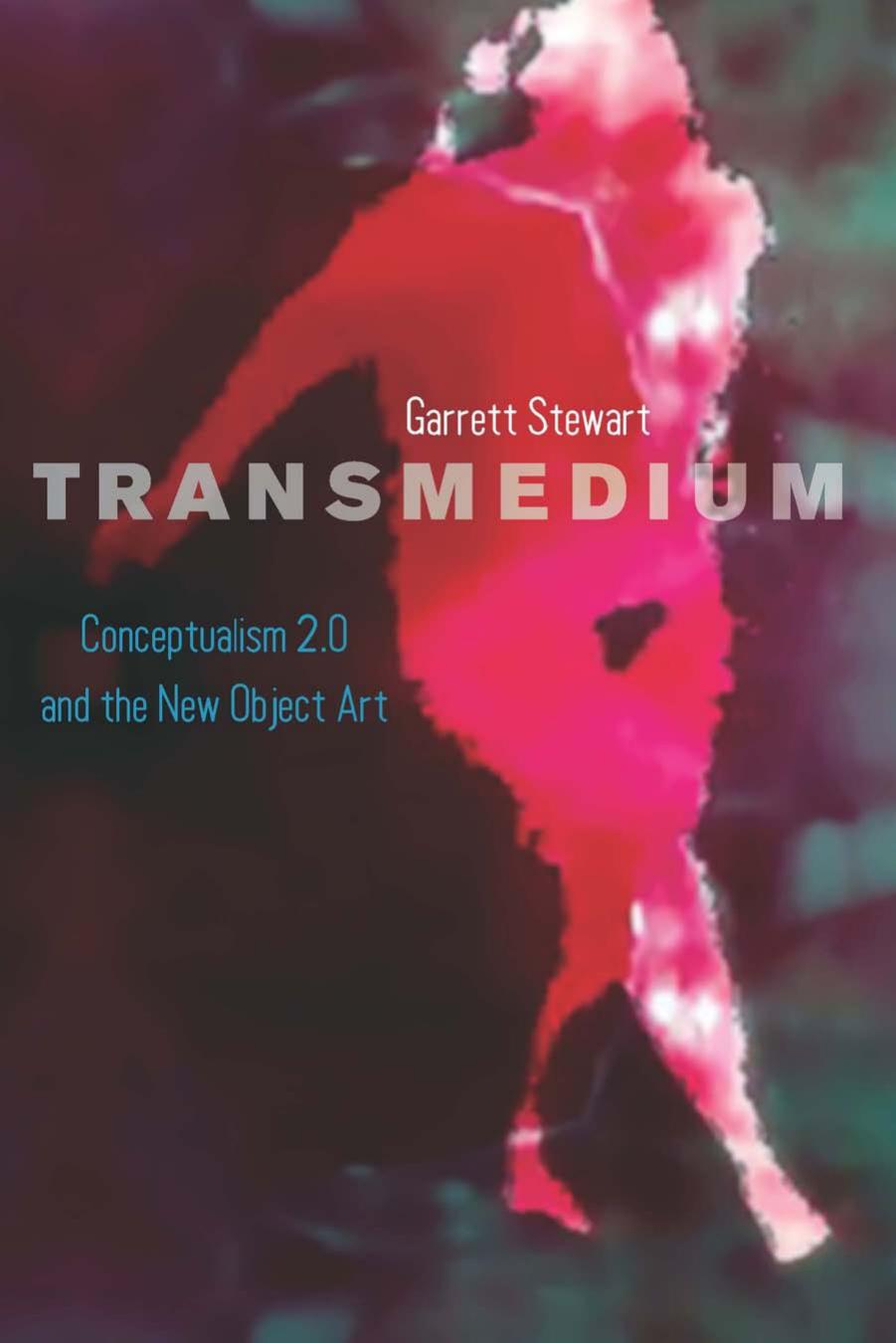Transmedium: Conceptualism 2.0 and the New Object Art by Garrett Stewart

Author:Garrett Stewart
Language: eng
Format: epub, pdf
Tags: art, General, Criticism & Theory, Performing Arts, Film, History & Criticism, Literary Criticism
Publisher: University of Chicago Press
Published: 2018-01-18T00:56:48.531000+00:00
[figure::horizon]
With a more focal center of gravity in photomechanical assemblage—but still veering between, or overlaying, separate media determinations in his time-based work—there are the career-long experiments in “para-photography,” as he called it, of Robert Heinecken, as assembled in a posthumous retrospective at MoMA in 2014. In one work, oversized foot-square photo enlargements, printed as transparencies, and marked as “Kodak safety film,” simulate separate images of discrepant female body parts frame-advanced on a numbered photographic roll—not just para-photography, then, but proto-cinema as well. The piecemeal array is stretched horizontally like a reclining nude but produces instead, under the title Figure/Horizon, a kind of abstract vanishing point of desire, fueled by image in general—the image system, as it were—more than by any one coherent picture of its sexualized object. The title’s slash might well have been used instead to indicate the work’s dissevered Strip/Tease.
Heinecken’s frequent impulse to comment on the erotics of the specular itself, apart from its content, is even more apparent in an actual moving-image equivalent from his work—in the form of an ironic video installation from 1970 called TV/Time Environment. There, the para-photographer has simulated, via minimal furnishing, a modest middle-class living room with an old-fashioned small-screen TV set running on a video loop of separate broadcast excerpts visible only through the torso and crotch of a female nude transparency plastered over the “home screen”: TV’s cathode fixation as its own kind of addictive erotomania—where the “horizon” of every image is the “figure” of unquenchable desire, serial, culturally saturated, but never satiating.
In contrast, Surrealism on TV, from 1986, offers a kind of reverse companion piece. It deploys, by a salient transmediation, the low-resolution grain resulting from photos of separate broadcast images on a TV screen—long before screen-shot computer technology. These are photos arbitrarily reconfigured in a nonrepeating series of three slide projections: a motorized version of that of arbitrary optic seriality, sans video motion, seen in Figure/Horizon. Each work seems operating in the spirit of Surrealism’s “exquisite corpse” (with its folded experiments in noncontinuous representation by different artists’ hands). Heinecken’s Surrealism on TV, of course, is a thirty-some-year-old work rendered all the more fully mediarchaeological, in its play between moved still and stilled movement, when seen at the MoMA retrospective in light of the double outdating of both cathode TV and the traditional slide projector. It thus takes its belated and unwitting place in the company of an installation like Simon Denny’s for the 2013 Venice Biennale, a punning assemblage called Analogue Broadcasting Hardware Compression. Huge images of the bulking broadcast apparatus in the studios of old-fashioned TV transmission are digitally photo-printed onto the equally superseded surface of stretched canvas on two sides of a dead-ended pathway—or lightless tunnel—lined with increasingly smashed and trash-compacted curved-screen TV monitors, sacrificed in punning deference to the new digital “compression” and its finer representational fidelities.
Download
Transmedium: Conceptualism 2.0 and the New Object Art by Garrett Stewart.pdf
This site does not store any files on its server. We only index and link to content provided by other sites. Please contact the content providers to delete copyright contents if any and email us, we'll remove relevant links or contents immediately.
| Books & Reading | Comparative Literature |
| Criticism & Theory | Genres & Styles |
| Movements & Periods | Reference |
| Regional & Cultural | Women Authors |
4 3 2 1: A Novel by Paul Auster(12263)
The handmaid's tale by Margaret Atwood(7662)
Giovanni's Room by James Baldwin(7162)
Asking the Right Questions: A Guide to Critical Thinking by M. Neil Browne & Stuart M. Keeley(5599)
Big Magic: Creative Living Beyond Fear by Elizabeth Gilbert(5575)
Ego Is the Enemy by Ryan Holiday(5266)
The Body: A Guide for Occupants by Bill Bryson(4952)
On Writing A Memoir of the Craft by Stephen King(4847)
Ken Follett - World without end by Ken Follett(4618)
Adulting by Kelly Williams Brown(4464)
Bluets by Maggie Nelson(4459)
Eat That Frog! by Brian Tracy(4408)
Guilty Pleasures by Laurell K Hamilton(4340)
The Poetry of Pablo Neruda by Pablo Neruda(4017)
Alive: The Story of the Andes Survivors by Piers Paul Read(3955)
White Noise - A Novel by Don DeLillo(3936)
Fingerprints of the Gods by Graham Hancock(3924)
The Book of Joy by Dalai Lama(3882)
The Bookshop by Penelope Fitzgerald(3762)
